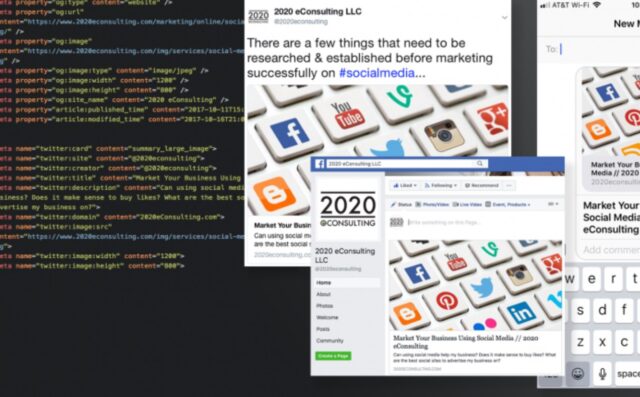

It will show which meta tags the crawler scrapes as well as any warnings or errors. To see how your markup appears when shared on Facebook, enter a URL into the Sharing Debugger. If your site is multilingual, setting the correct locale will help with more engagement. Keep this short one or two sentences are fine. Unlike the HTML description tag, this carries no keyword strength for search engine indexing.

Put a compelling description here to help increase click-through rate, as this appears directly under the title. Using this tag, you will ensure that all social shares will only access one URL, which helps your Facebook EdgeRank. Although it seems redundant at first sight, this tag is significant. Based on the landscape ratio, we recommend 1200 x 630. Facebook Open Graph Docs suggests a landscape of 1.9:1 and 1:1 image for ads. Two primary schools of thought here are the landscape image and the square image. If the page specifies an og:image, it should specify og:image:alt.Īn important consideration here is the image size. Og:image:alt - A description of what is in the image (not a caption). Og:image:height - The number of pixels high. Og:image:width - The number of pixels wide. Og:image:type - A MIME type for this image. Og:image:secure_url - An alternate URL to use if the webpage requires HTTPS. The og:image property has some optional structured properties that you can use if appropriate. Note that many social sites use the same og:image to present thumbnails for a site, including Facebook, LinkedIn, Reddit, Pinterest, and Twitter. A social post image will increase your user reach. This is an image URL that should represent your object within the network graph. Note that the list changes, so if you are using a less common type, it may need to be updated from time to time. The most common types are website and article. The type of content you are sharing is the og:type. A blog could use | O8 blog to better deliver the context. We could put | for Global setting, for example. This will usually be similar to the HTML title, as seen by search engines such as Google. This is where you customize the page title. The four required properties for every page are: For example, if you want to add a post-related image to the OG, Drupal Metatag allows you to enter tokens to generate a dynamic value. Then, customize content type, taxonomy, or user as needed if the Global setting is not sufficient. Customize the front page meta tag to tune your most important landing page. You’ll want to start with a Global setting as the general coverage for all pages.

On Drupal, what you’ll need for this is the Metatag module and its Metatag: Facebook submodule.


 0 kommentar(er)
0 kommentar(er)
